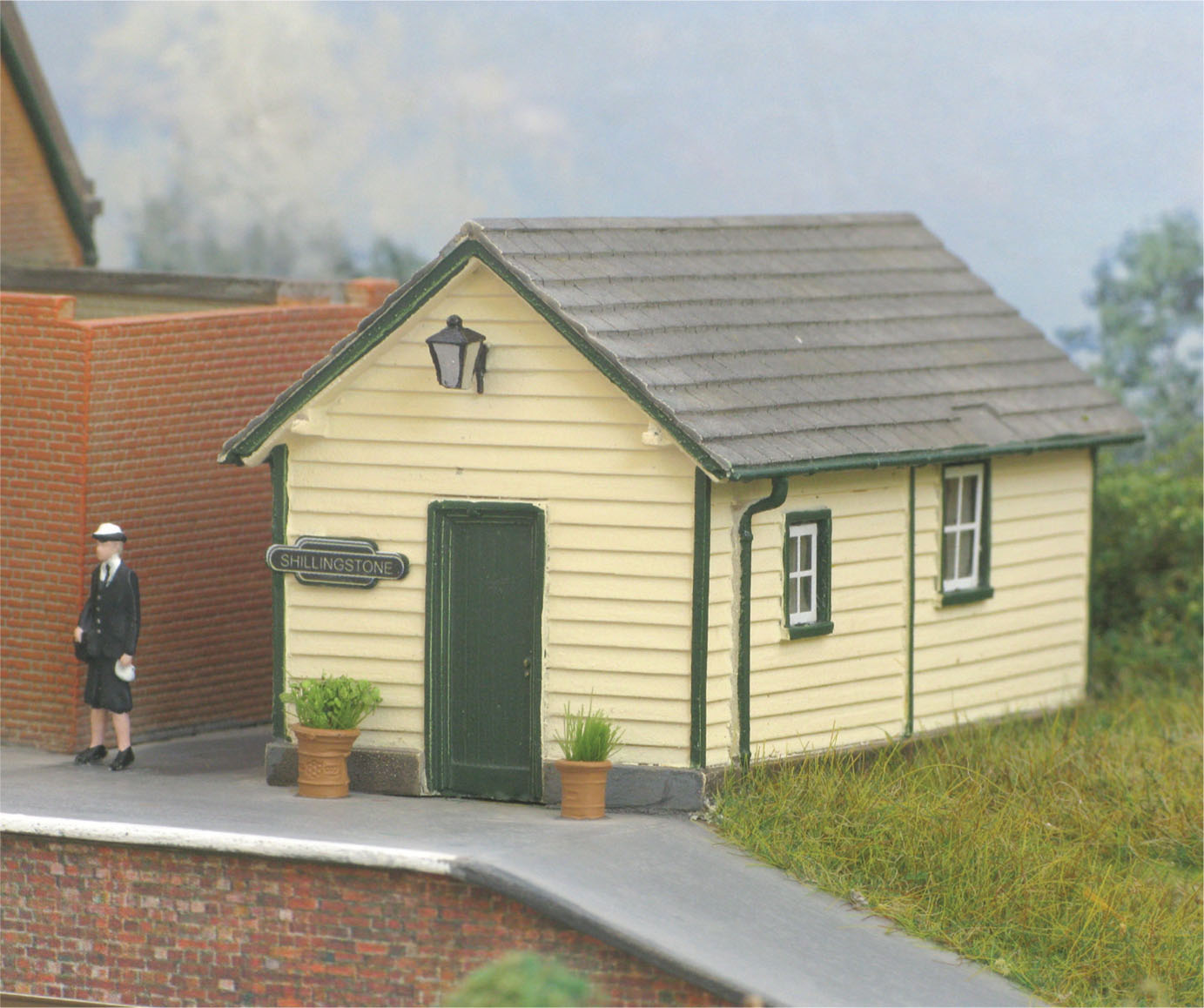
A couple of pots with plants and a policewoman contribute to this cameo scene on a Shillingstone diorama. The building and the figure are by Bachmann Scenecraft, with the pots by Gaugemaster.
ADDING THE DETAILS
The details are what most people notice first on a layout.
The scenic accessory aspect is one of the fastest growing sectors of the hobby. There are many small firms that make a valuable contribution to the hobby, in addition to the larger well-known names.
FIGURES
Adding figures and small scenes to a layout creates points of interest for the viewer. If your layout is small, such cameo scenes might even distract from the tiny size of the layout. Figures are available in all the common scales from numerous manufacturers in every imaginable pose. Some come ready-painted and just need attaching to the layout. These are mainly made from plastic, but others need to be painted – these are made from either plastic or white metal. Companies that make model figures include Aidan Campbell, Bachmann Scenecraft, Dapol, Dart Castings, Faller, Hornby, Kibri, Langley Models, Merten, Mike Pett, Model Scene, Montys, P & D Marsh, Preiser, Noch, Ten Commandments, Vollmer and Woodland Scenics.
Whilst many of these figures are OO scale, others from the European and American manufacturers are HO scale. Whilst some modellers insist on using only OO figures, other modellers are happy to use HO figures on OO-scale layouts provided that the two sizes of figures are not located next to each other.
The scope for detailing a layout with figures is enormous. For example, if you are modelling the Teignmouth sea wall in OO scale, Noch makes HO-scale windsurfers, rowing and sailing boats, beach equipment, bathers, nude bathers (if you want those on your layout), bathers applying sun cream, anglers and so on. In addition to models of people, companies make miniature birds, animals, snakes, horses, dogs, cats, gulls, deer and many more.

A couple of pots with plants and a policewoman contribute to this cameo scene on a Shillingstone diorama. The building and the figure are by Bachmann Scenecraft, with the pots by Gaugemaster.

Ford station sign. Look out for these details as you travel around. Take photographs so that you can refer to them later.

Fences and more fences. Never before have modellers been so blessed in the main scales. The materials used include plastic and laser-cut timber.
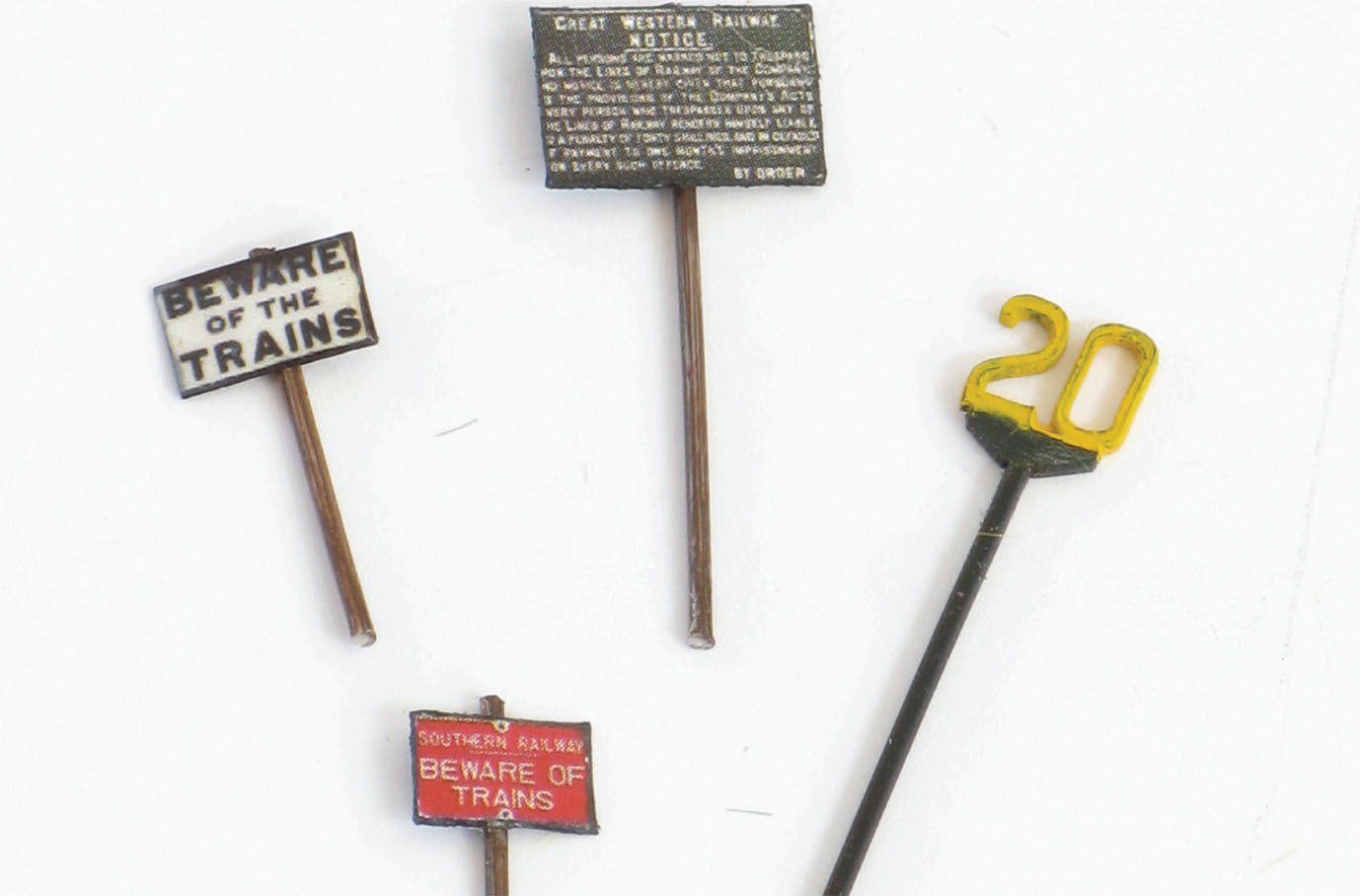
Lineside signs are easy to make from the various cardboard sheets from Gaugemaster, Sankey Scenics and others. The posts are plastic rod. The speed restriction sign is a laser-cut sign from York Modelmaking.
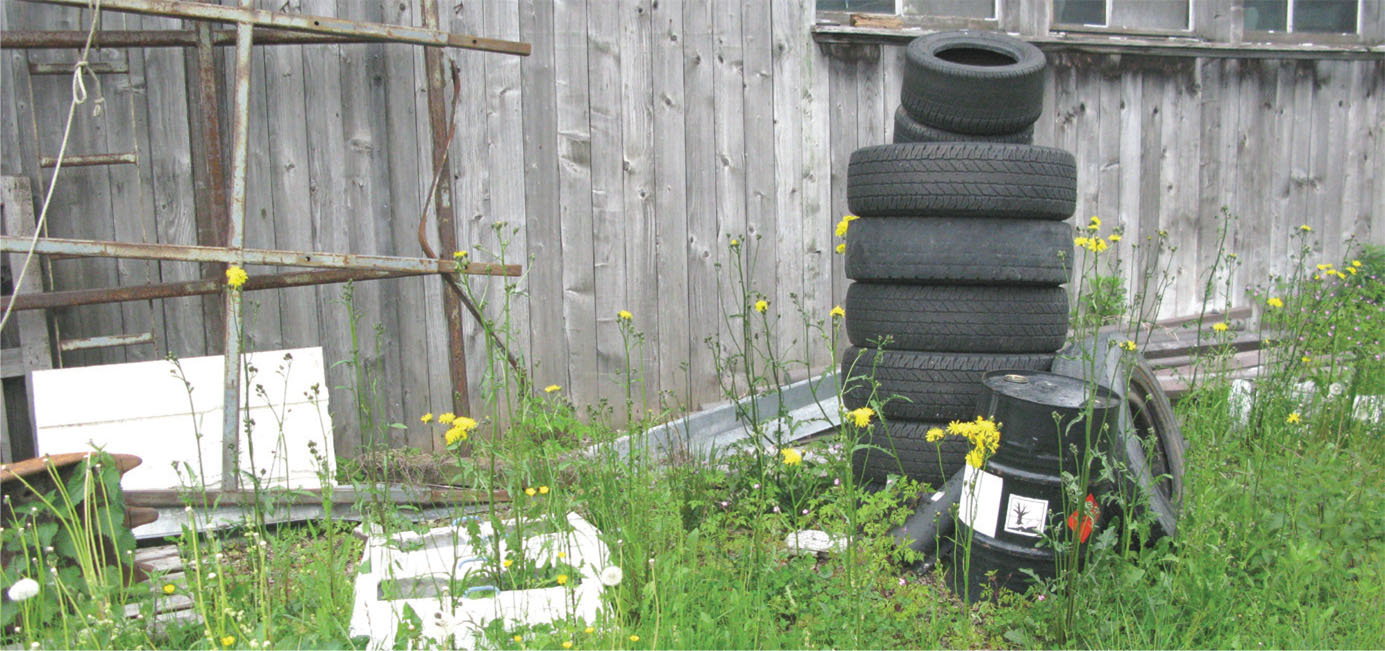
Sadly, in most places we see rubbish in real life. Modelling such rubbish is an easy task once you find some bits and pieces.
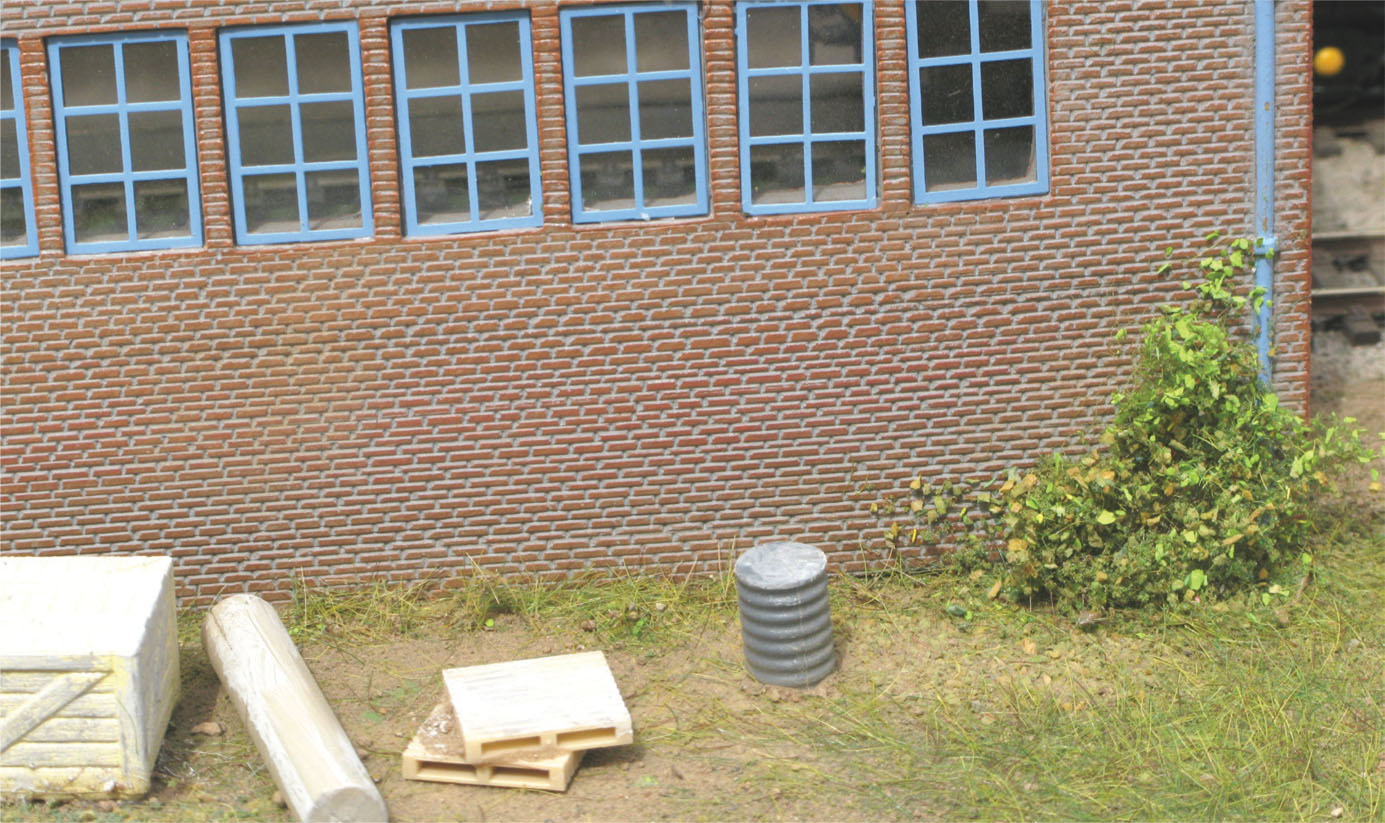
Bits and bobs alongside this locomotive depot building were found in my spares box. I knew they would come in useful one day. They were fixed to the scene with spots of PVA.

Noch produces HO-scale figures of UK station personnel in the post-war era.
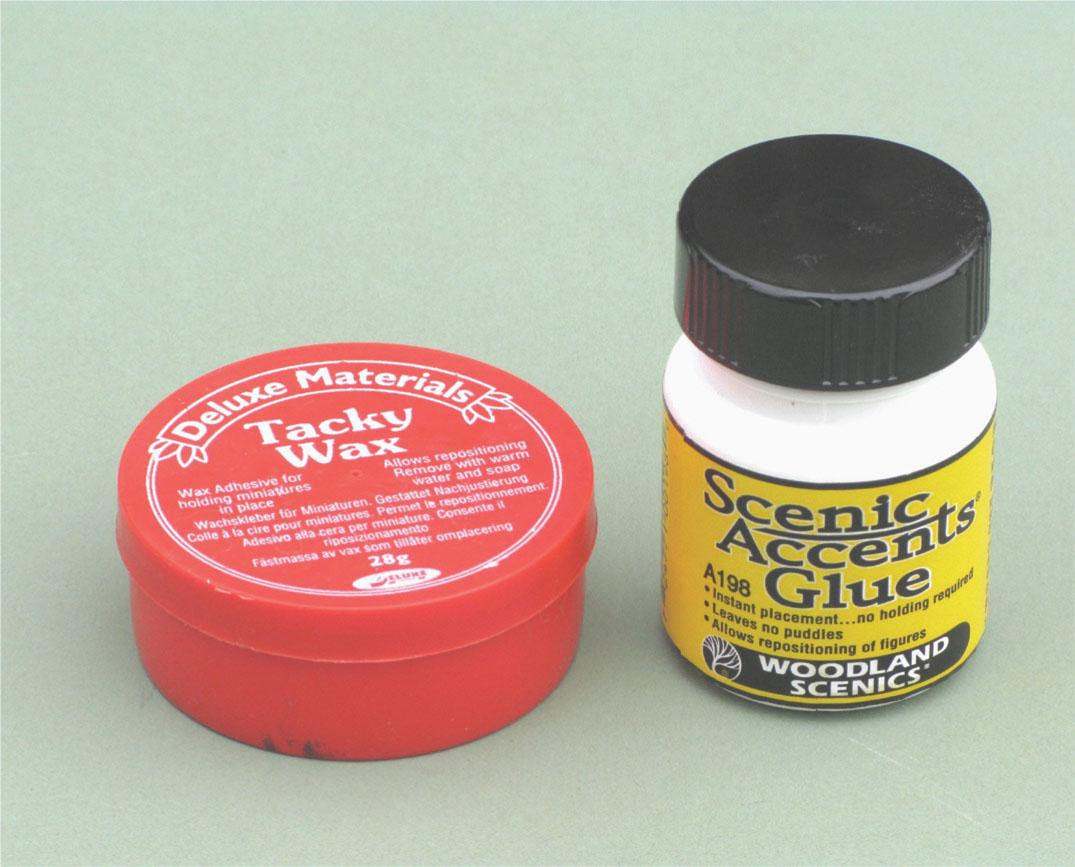
These two adhesives are very good for working with figures on a layout. The Tacky Wax is useful if you just want to position figures or accessories on a temporary basis, such as for a photographic shoot.
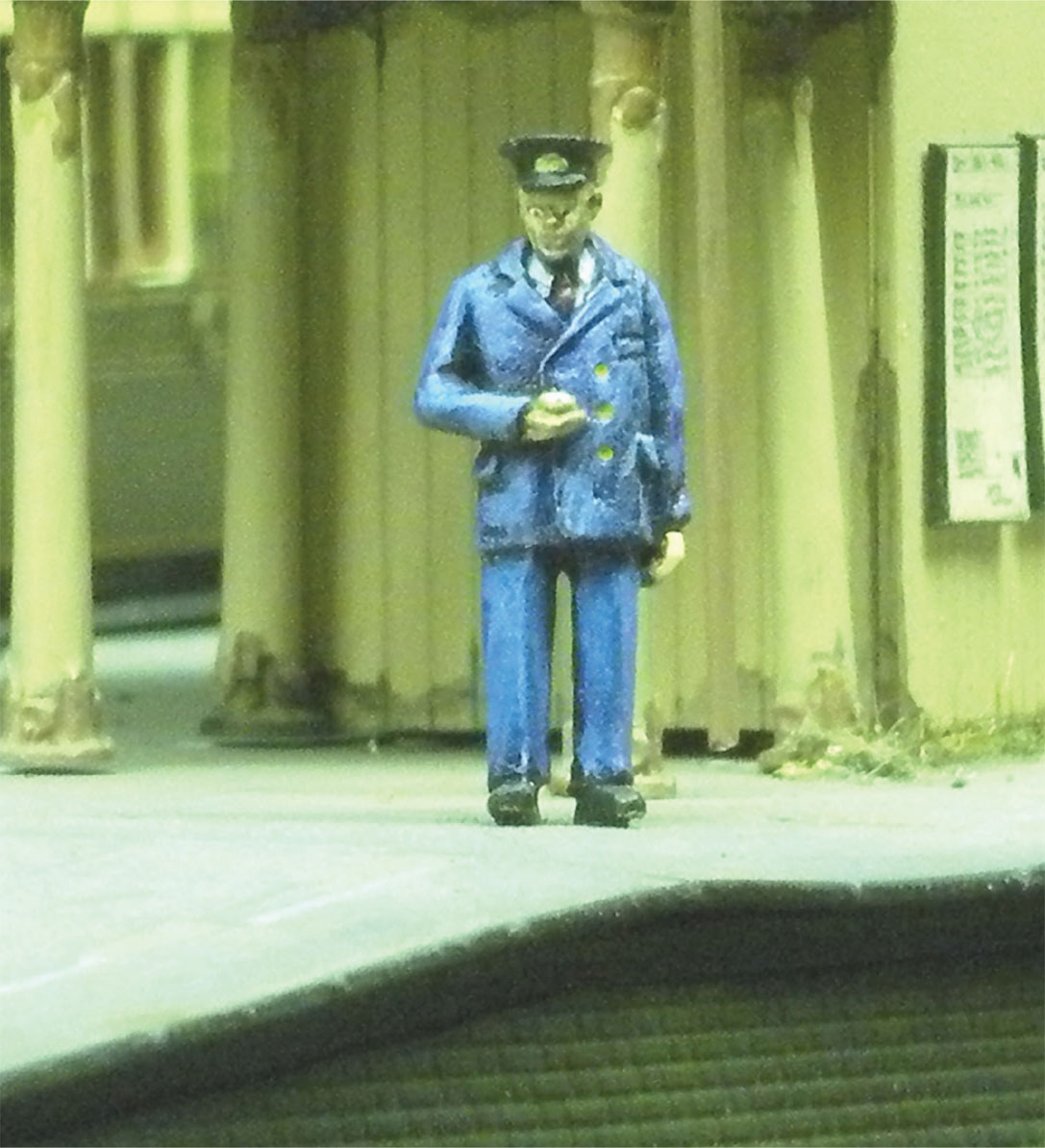
At Pendon Museum the figures are very well painted and are arranged to tell a story. This one is looking at his pocket watch – maybe the train is late?
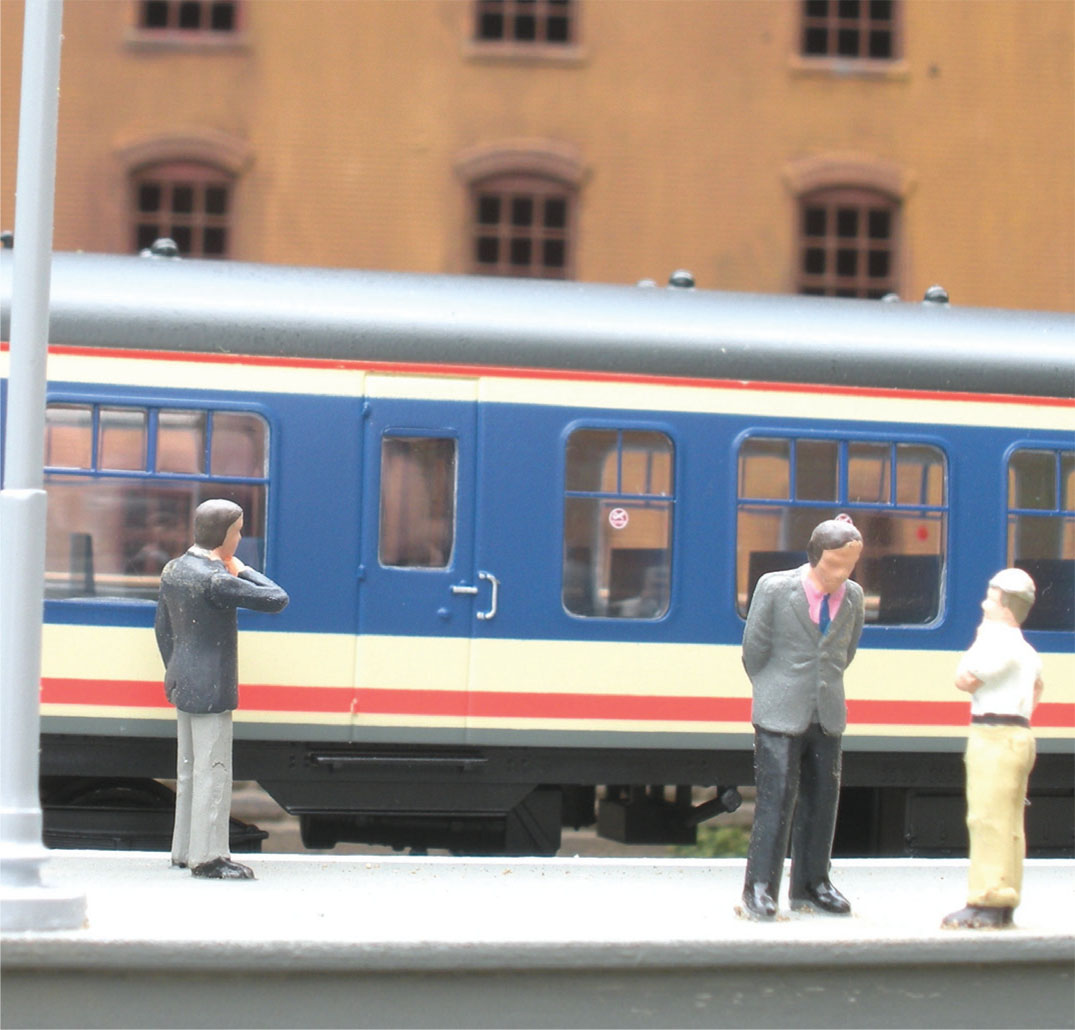
It is approaching rush hour at this city station in the days of Network South East. Good-quality ready-painted figures are now readily available from Bachmann Scenecraft, Noch, Preiser and others.

These figures convey the impression of movement. Some European figures do actually move, with men chopping wood, young people dancing and many more.
WORKING WITH FIGURES
Position the figures in groups or engaging in work. Do not be tempted to overpopulate a layout. Use small cameo scenes to increase the viewing interest of your layout. The layouts at Pendon Museum feature a lot of scenes with figures in natural poses such as chatting together. To fix the figures down use PVA, contact adhesive, Deluxe Materials Speed Bond, Hob-e-Tac or any of the other glues that are suitable. If you only wish to position the figures for a photograph, one of the repositionable glues such as Deluxe Materials Tacky Glue is ideal.
Even ready-painted figures can be improved by highlighting further details. A thin wash of black acrylic paint or weathering dye on finished figures removes the glossy appearance of ready-painted figures and will also highlight some of the details.
Unpainted metal figures should be cleaned with soap and water and when dry sprayed with a light coat of primer (for example, Halfords grey cellulose primer for cars). Use a ‘base colour’ for the whole figure as the colour that will cover the largest area. Paint the figure with an airbrush or brush, using oil-or cellulose-based paints such as Humbrol. Allow the figure to dry fully, then paint on the details using acrylic paint. Always wash your hands carefully after working, cleaning or polishing white metal and use a facemask when using aerosol or airbrushed paint.
The cost of ready-painted OO-scale figures from Bachmann Scenecraft or Noch generally works out at about £1 per figure. Preiser figures are usually more detailed and are sometimes more expensive. The cost of one unpainted figure from Preiser works out at less than £2 per figure, while unpainted figures from companies such as Dart Castings range from about £1.50 each.
IMPROVING PLASTIC ROAD VEHICLES
There are many companies now producing excellent models of road vehicles in various scales. In OO scale, for example, die-cast road vehicle ranges include those from Bachmann Scenecraft, Cararama, Classix, EFE, Hornby Skale Autos, Oxford Diecast and a lot more. In addition to these, many European and American manufacturers produce model road vehicles from plastic, either as a ready-made model or as a kit. For example Atlas, Herpa, Rietze and Wiking produce readymade plastic vehicles, whilst Kibri makes a large number of plastic kits of a variety of road vehicles. The better-quality plastic road vehicles are well detailed and some come with add-on parts such as door mirrors.
Though many plastic model road vehicles are HO scale rather than OO scale, by carefully positioning HO road vehicles on a layout – ideally not next to OO-scale road vehicles – the vehicles do not look out of place. Improving the appearance of a road vehicle does not take too long and it does elevate the look of the model, rather than having it appear to be in ex-showroom condition.
TOOLS AND MATERIALS
Tools required for improving a plastic road vehicle consist of:
Materials required:
STEP BY STEP CHANGES TO IMPROVE THE APPEARANCE OF A PLASTIC LORRY
Usually lorries, buses and coaches come with detailing parts to be added, such as door mirrors. These need to be cut off the plastic sprue then glued to the model. The job is a little fiddly but a pair of fine-nosed tweezers does help to carry the small mirrors to the holes in the body. Once the parts are pushed in as far as they will go, dribble a small blob of plastic cement around the connection to be certain that the added parts will not fall off.
Before weathering a vehicle, the windows need to be masked. This can be done either by carefully cutting low-tack masking tape and placing it into the windows, or by using Humbrol Maskol fluid, which needs to be carefully ‘painted’ on to the windows, left to dry and peeled off after the weathering is complete. Weathering a road vehicle can be carried out with weathering chalks, or very light sprays of acrylic paint from an aerosol or airbrush. Go lightly, so as not to make it look too dirty. A micro-paintbrush can be used for painting the indicators and lights on the vehicle.

Three plastic road vehicles in HO scale by Herpa, Rietze and Wiking. There is a huge selection of European road vehicles available, from cars to the largest HGVs. Most of them look a bit too glossy to be realistic straight out of the box, but they can be improved by just one hour’s work.
The Wiking MAN lorry used for this demonstration cost £14. The little acrylic paint used cost, say 50p, with a few drops of adhesive at 10p, 15p worth of Maskol and printing ink for the number plates at roughly 10p, bringing the conversion cost to less than £1. From start to finish, including weathering the lorry, adding the mirrors and the number plates, took less than an hour, plus the drying times for the paint and the adhesive. There are various additional projects that could be undertaken to improve this vehicle further, including the addition of a driver.
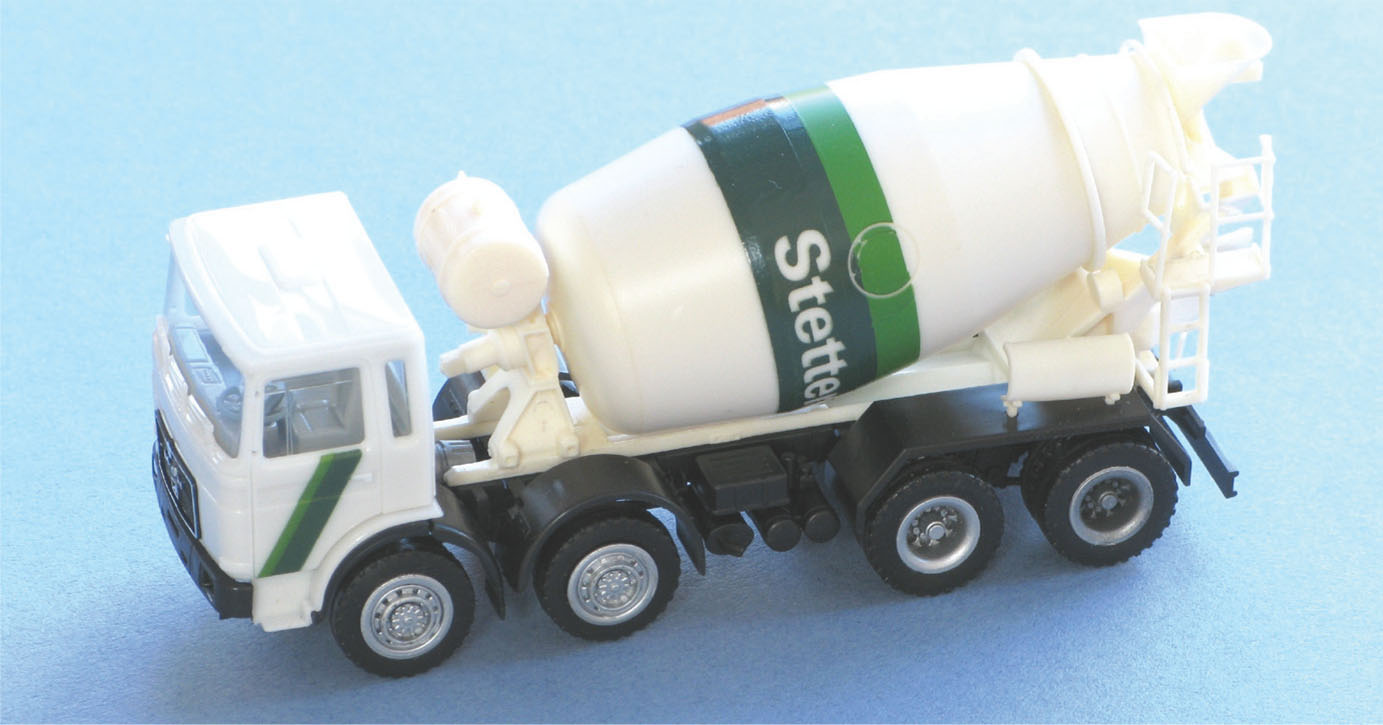
This concrete lorry is the basis of this project. It looks too clean and shiny.

The black plastic sprue containing the three door mirrors. The smaller mirror is fixed on top of the driver’s door.
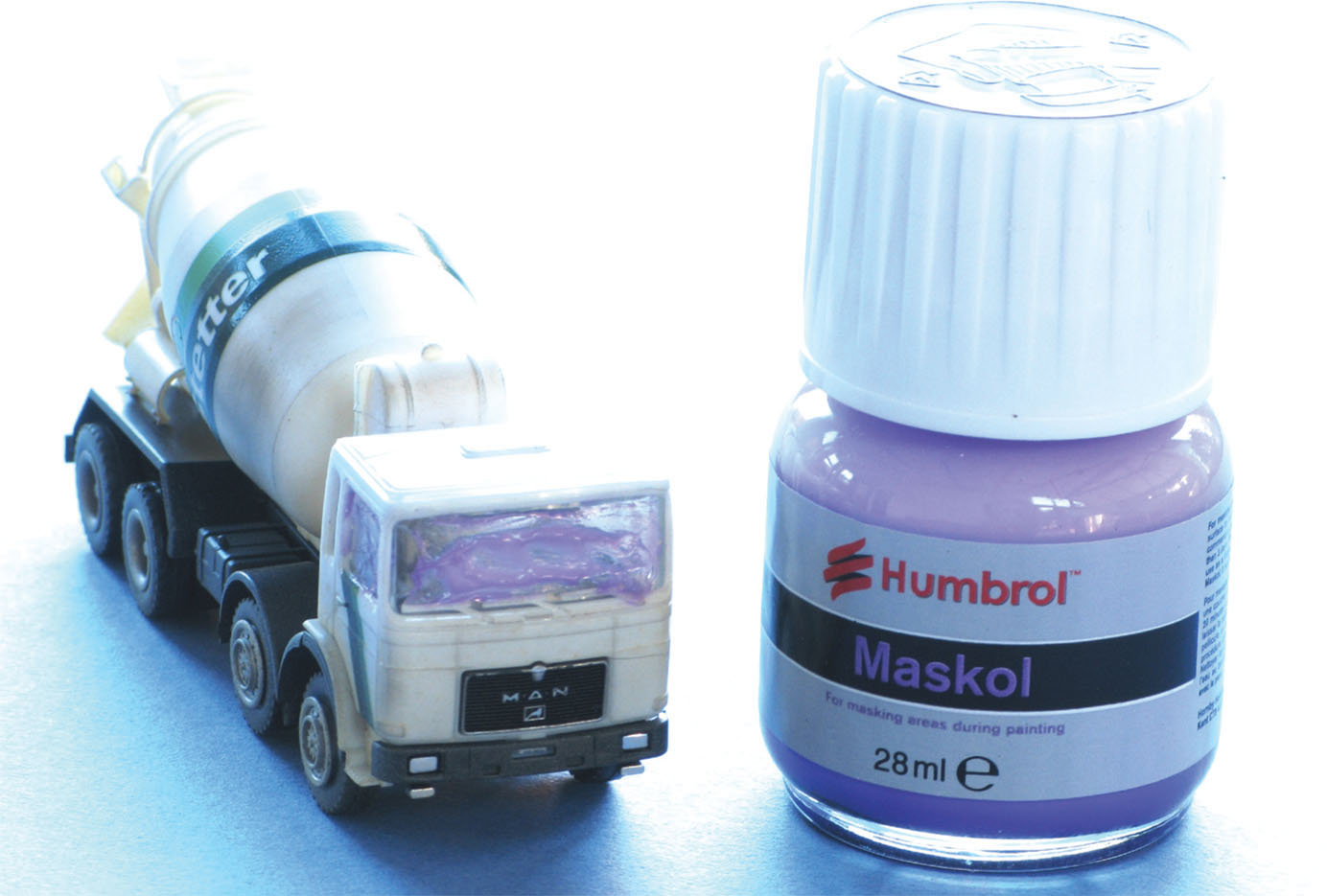
Before weathering the vehicle, the windscreen and side pictures need to be covered with Humbrol Maskol, which can be spread on with an old paintbrush, then left to dry to become rubbery within a few minutes.
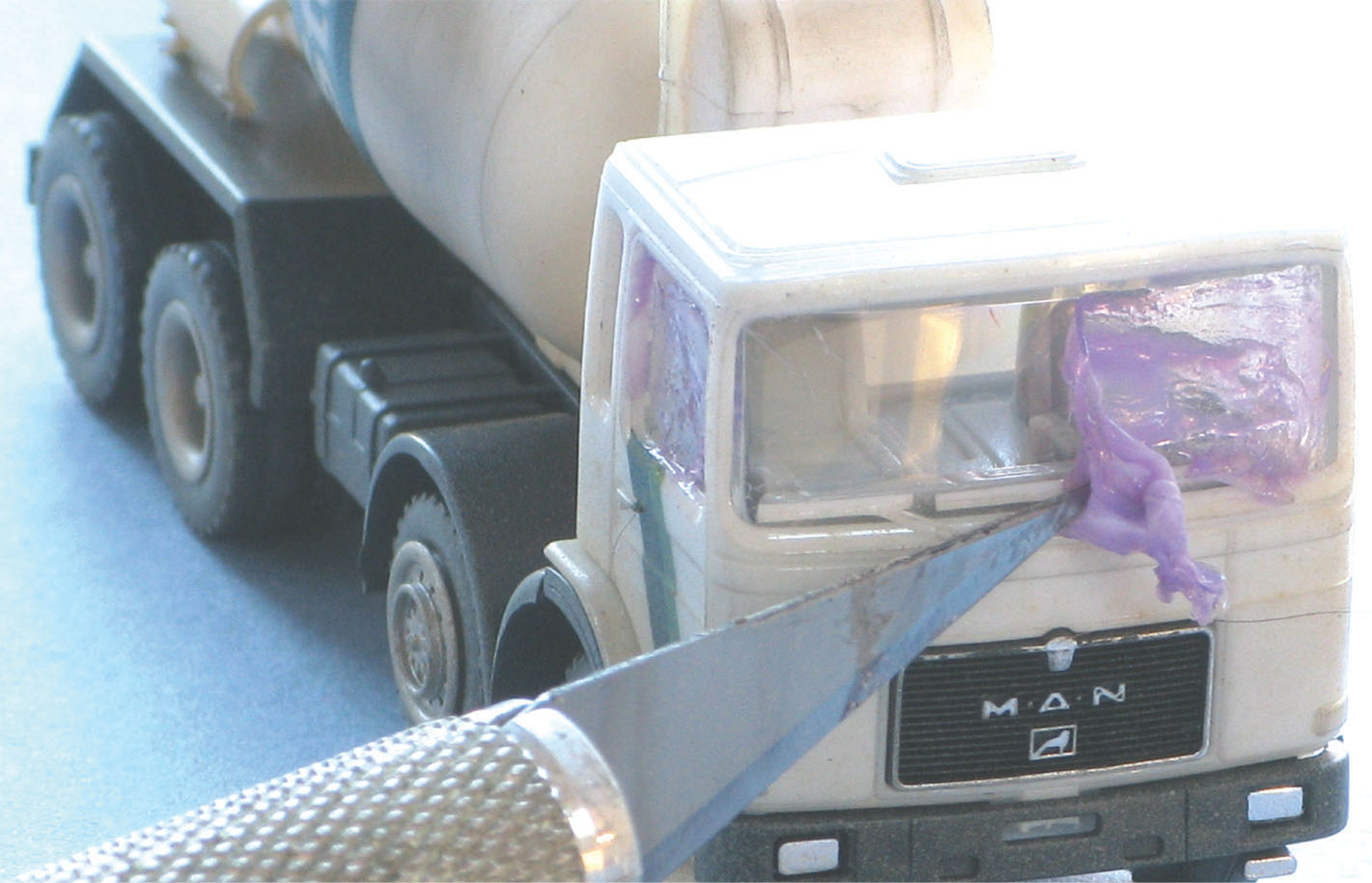
After weathering, the Maskol can be carefully peeled off, but be careful not to scratch the plastic windows as you do this. The Maskol comes off quite easily.

The lorry is now showing signs of light weathering after the door mirrors have been fitted. This completed lorry looks much more realistic after just one hour’s work.
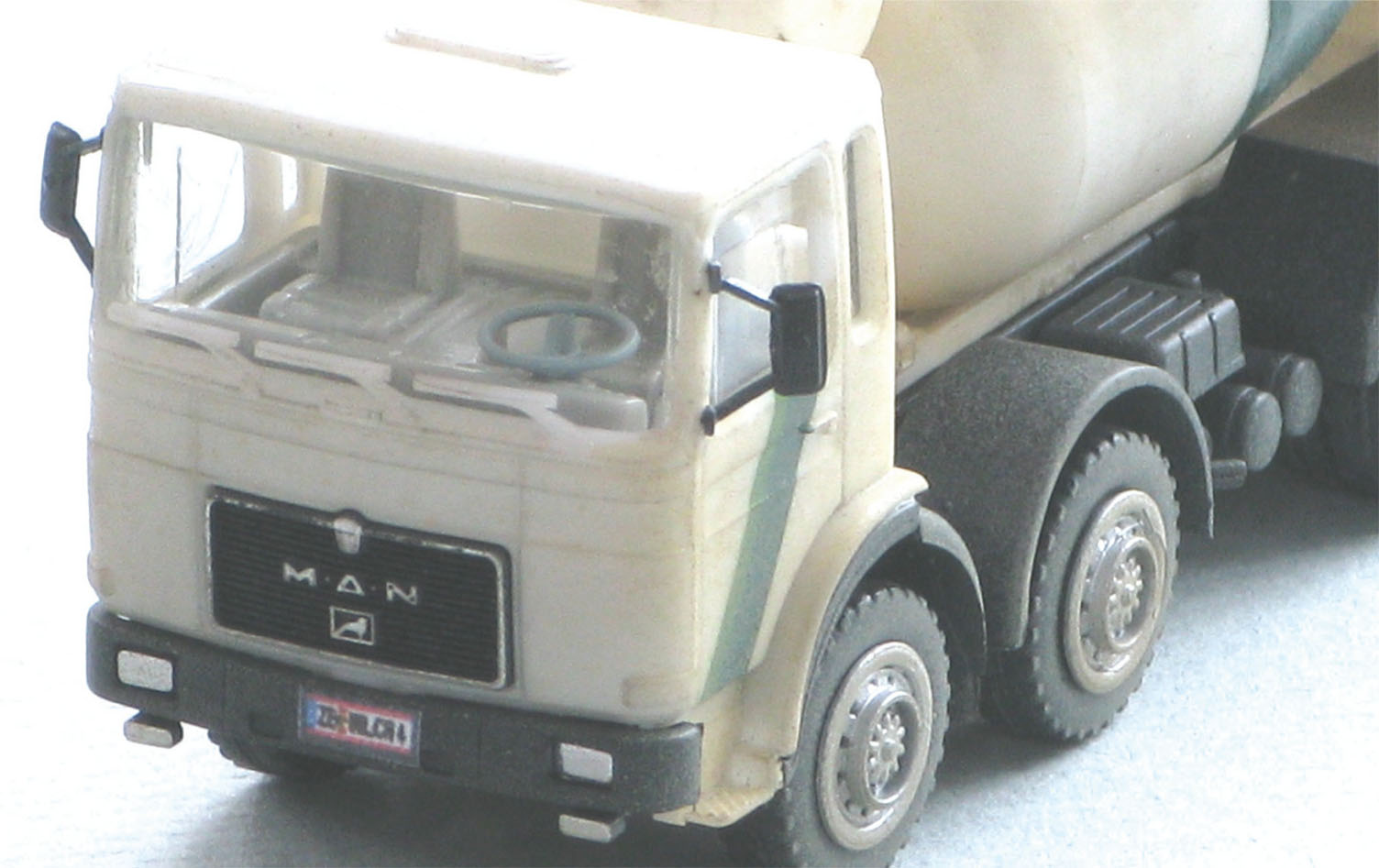
After the number plate has been added, the model looks so much more complete and realistic. I used UHU quick-setting adhesive to fix the number plate to the vehicle.

There are many companies now producing excellent models of road vehicles in various scales. In OO scale, for example, die-cast road vehicle ranges include those from Bachmann Scenecraft, Classix, Cararama, EFE Hornby Skale Autos, Oxford Diecast and a lot more. This Land Rover is a Hornby Skale Autos model.
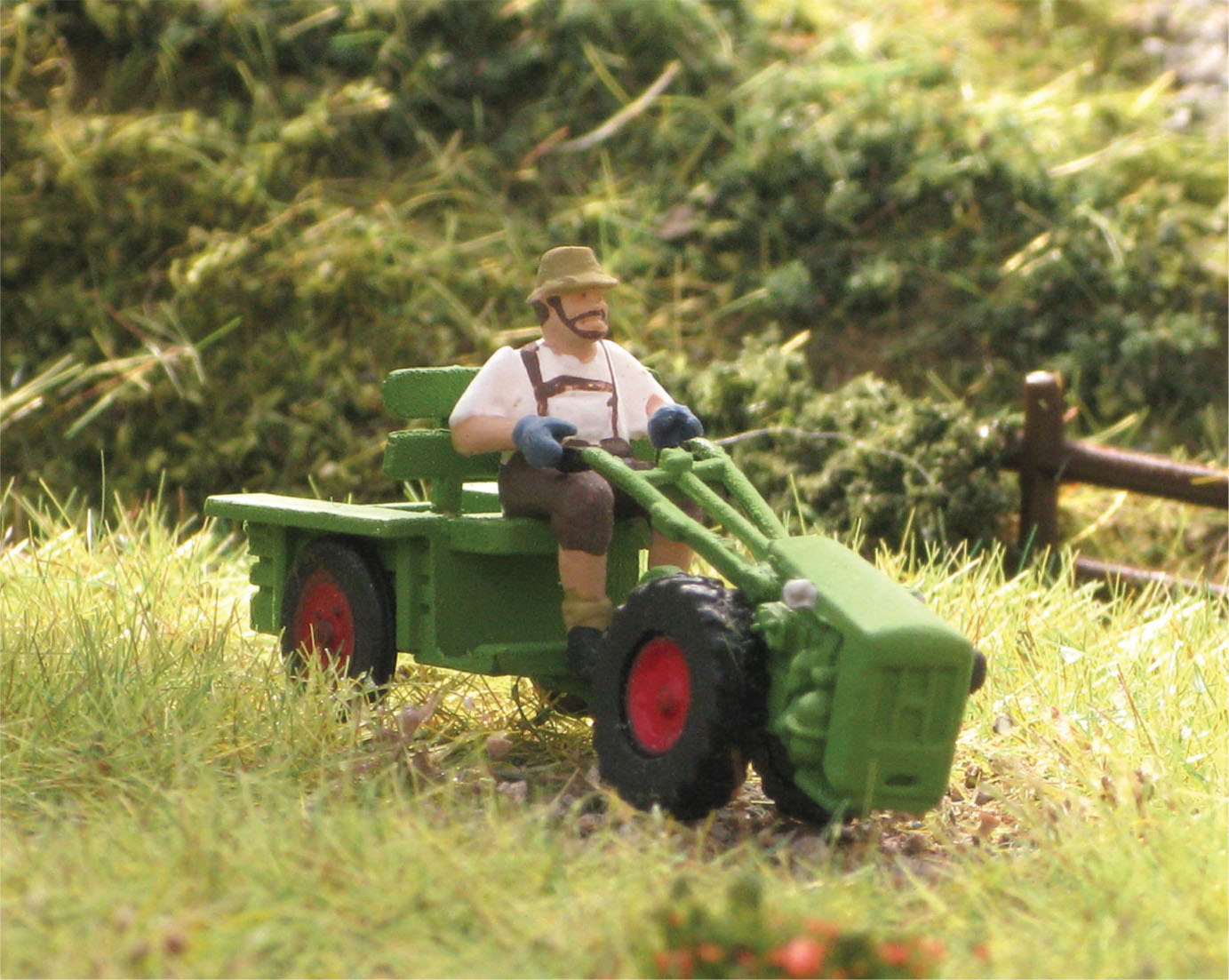
This Noch minitractor comes complete with its driver in HO scale.
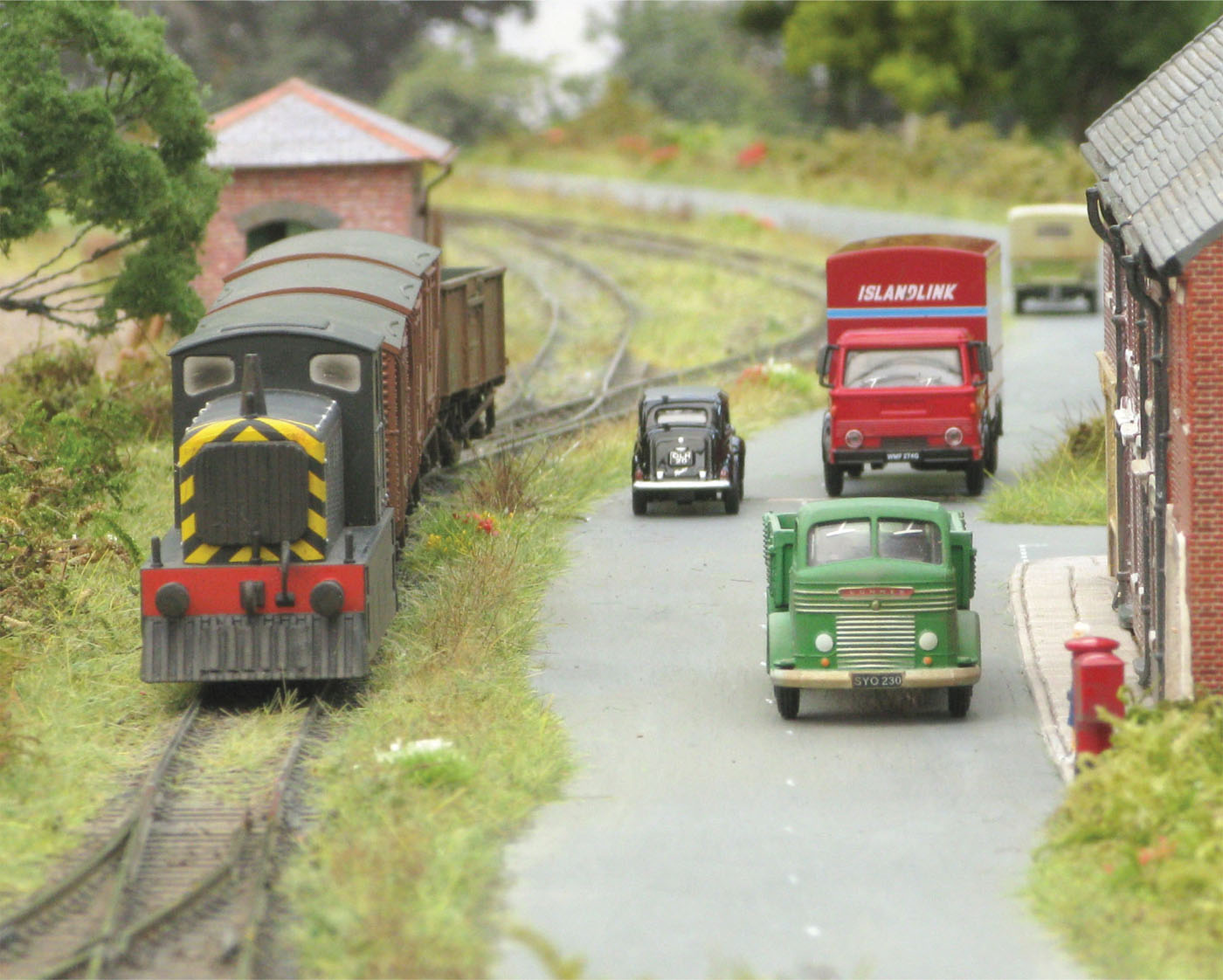
Die-cast cars chase the train on the Wisbech and Upwell Tramway in OO scale. On roads there are a lot of details that can be added, such as road markings, traffic signs (of the correct era), bus stops, car parks, level crossings, road name boards, drain covers, streetlights, pavements, fences, hedges, cyclists, puddles, speed cameras, changes in the road surface, men at work digging up the road, traffic cones, zebra crossings, buses, cars, lorries and the occasional horse-drawn vehicle.
Number Plates
Editable OO-scale number plates are available from Model Railway Scenery (www.modelrailwayscenery.com). These number plates feature subtle weathering, are accurately scaled from the DVLA specifications, have 1200dpi resolution for good results on most printers and are fully compatible with die-cast and plastic kit vehicle models.
TARBET – A SCOTTISH REGION DIORAMA
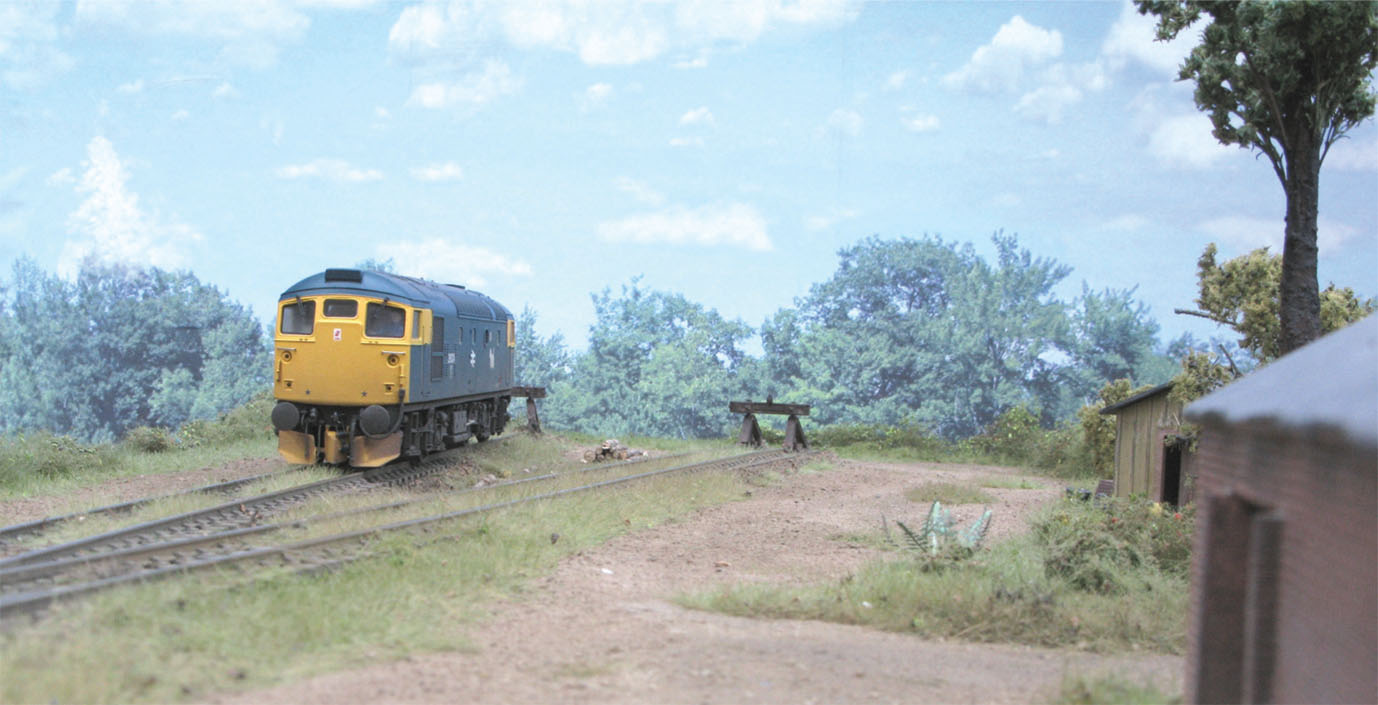
This small layout only measures 1.3 x 0.4m, but as somewhere to experiment with modelling ideas and as a photographic backdrop it has proved to be very useful.

Class 26 locomotives used to work in Scotland. This one carries the Eastfield depot Scottie dog logo.
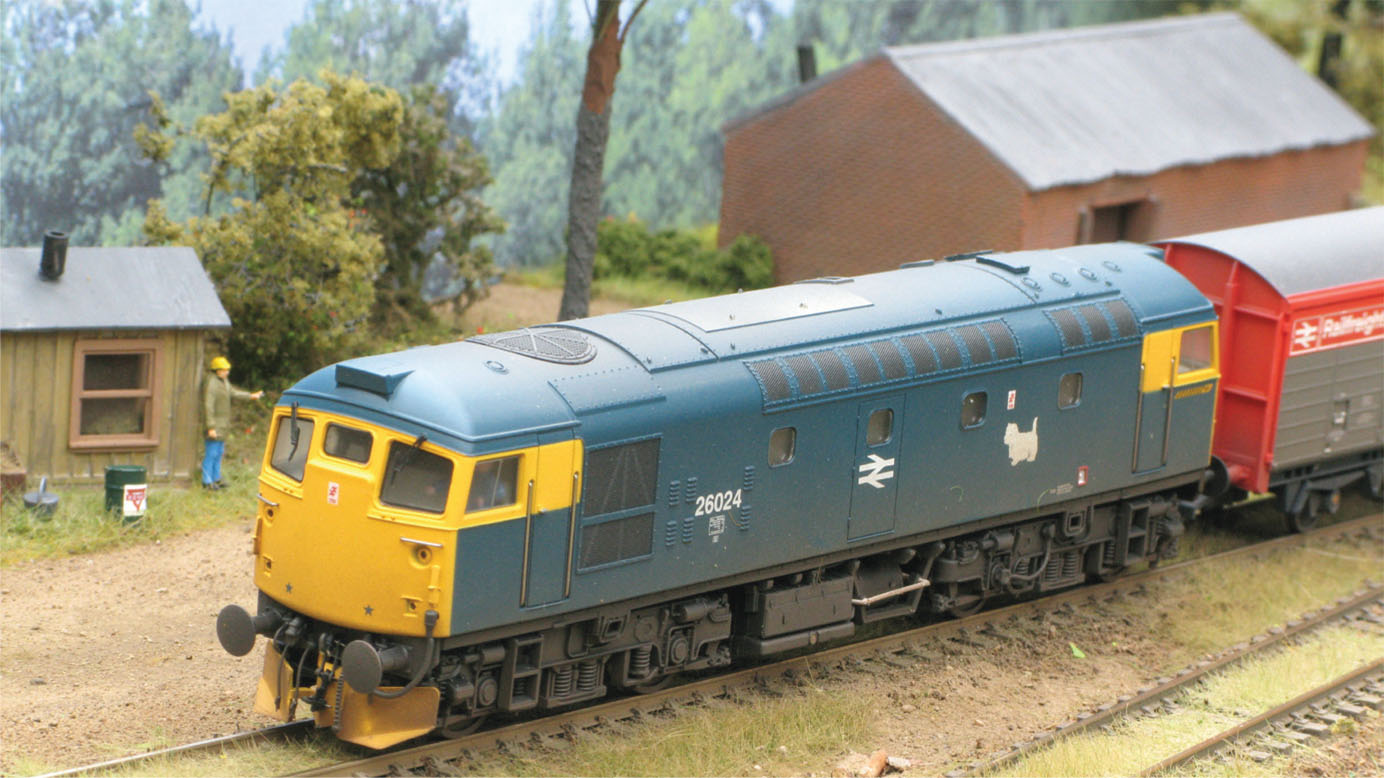
Weathered Heljan 26024 locomotive arrives with a closed Railfreight van.
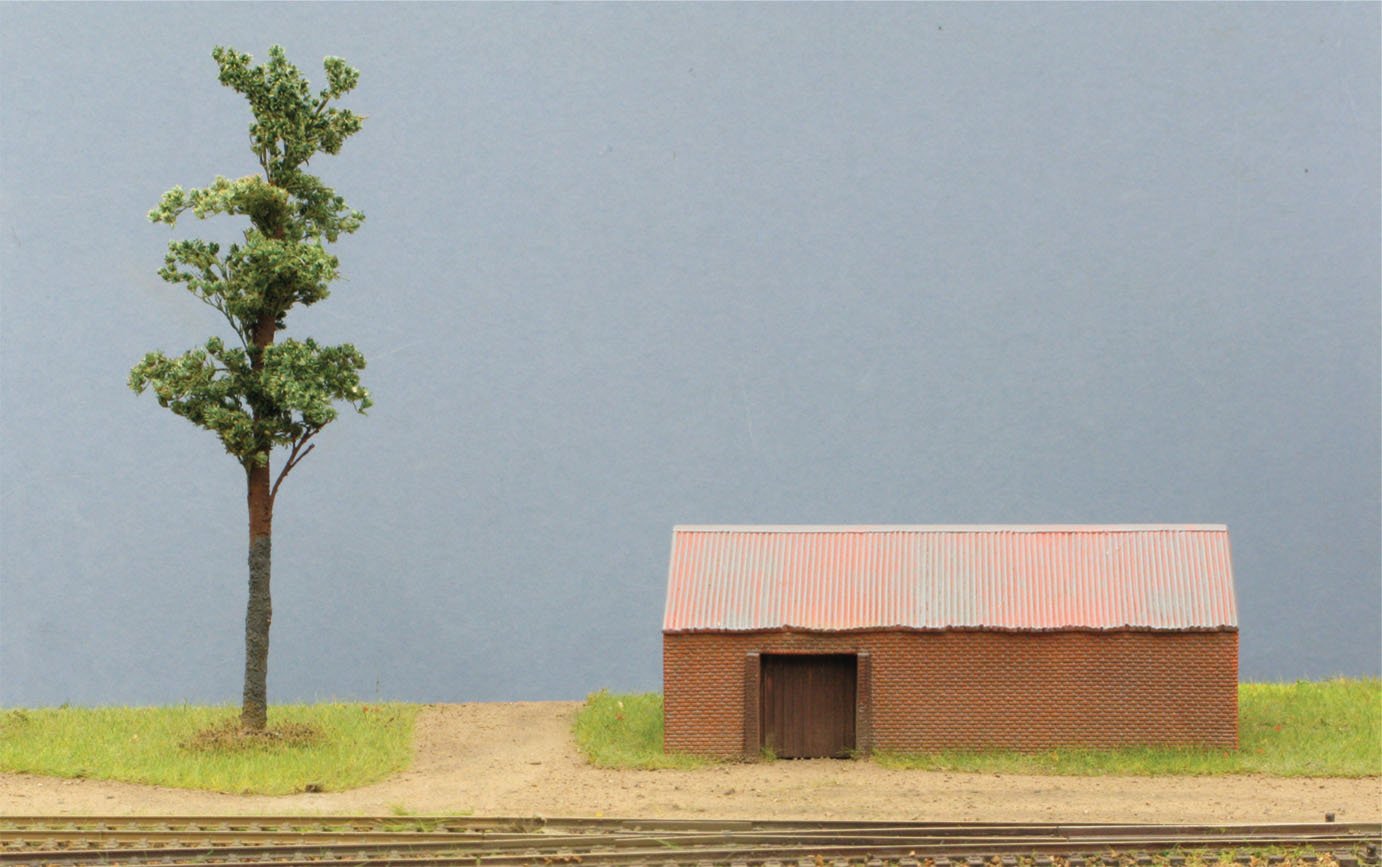
Before… The lone tree and resin building look distinctly unrealistic.
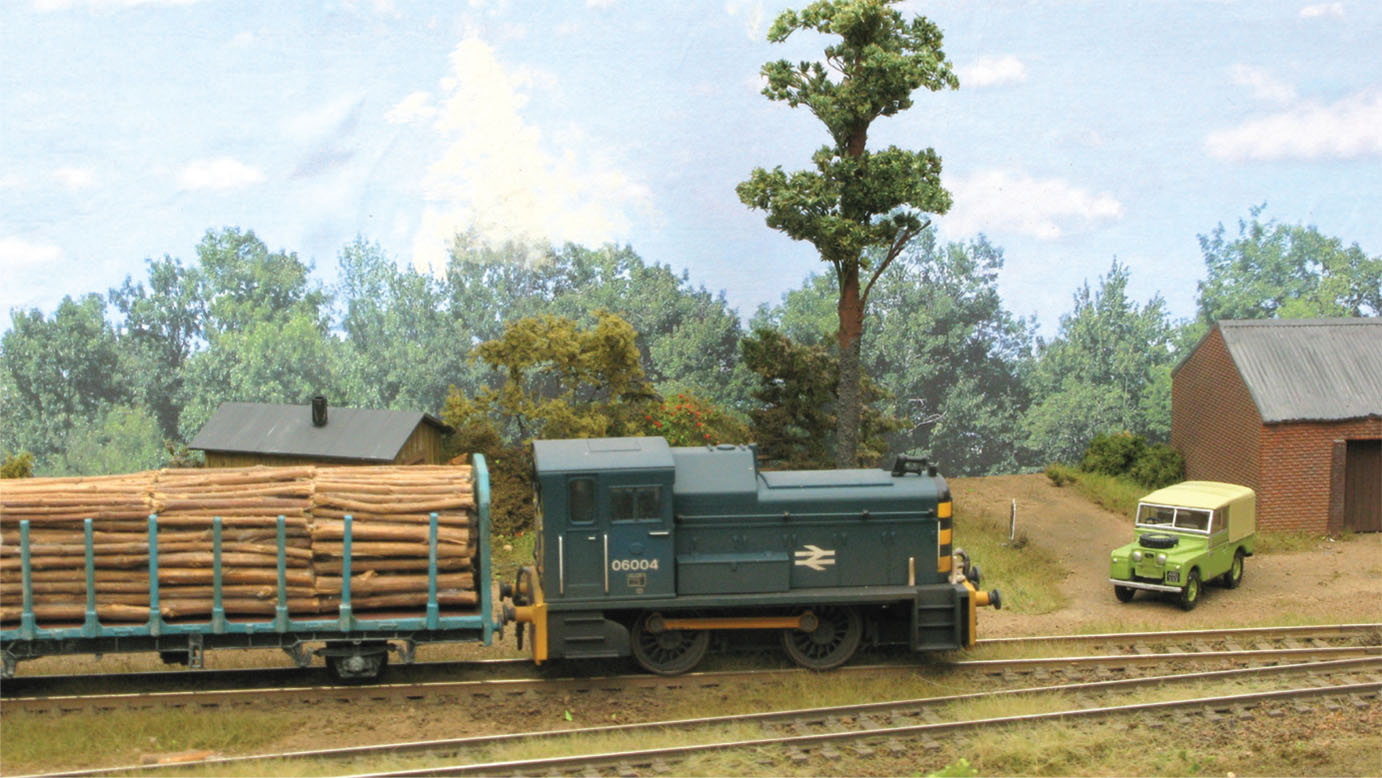
After… By adding a photographic back scene, a fence, hedging and better ground cover, the scene is transformed.